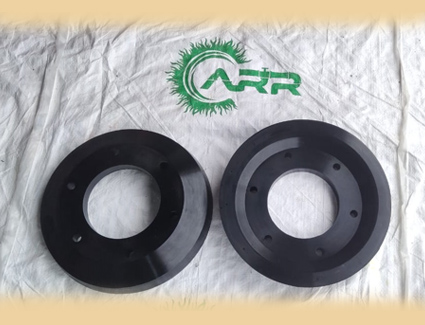Nitrile rubber, also known as NBR, Buna-N, and acrylonitrile butadiene rubber, is a synthetic rubber copolymer of acrylonitrile (ACN) and butadiene.
NBR's versatility and reliability makes it an excellent choice for general-purpose applications. Nitrile rubber is reasonably resistant to petroleum oils, crude oil, water, gasoline, propane and some hydraulic fluids. It also provides good abrasion and compression set resistance.
It vary depending on the polymer's composition of nitrile, this particular type of synthetic rubber is unusual in being generally resistant to oil, fuel, and other chemicals. So, the more nitrile within the polymer, the higher the resistance to oils but the lower the flexibility of the material.
Standard Features
- Nitrile is the most widely used elastomer in the seal industry today
- It is used in the automotive and aeronautical industry to make fuel and oil handling hoses, seals, grommets, and self-sealing fuel tanks, since ordinary rubbers cannot be used
- NBR's ability to withstand a range of temperatures from -40 to 108 °C (-40 to 226 °F) makes it an ideal material for aeronautical applications
- Nitrile butadiene is also used to create moulded goods, footwear, adhesives, sealants, sponges, expanded foams, and floor mats
- The uses of nitrile rubber include disposable non-latex gloves, automotive transmission belts, hoses, O-rings, gaskets, oil seals, V belts, static & dynamic hydraulic seals, synthetic leather, printer's form rollers, and as cable jacketing; NBR latex can also be used in the preparation of adhesives and as a pigment binder.
Applications: Aircraft Fuel Systems, Automotive Fuel Systems, Off-Road Equipment & Marine Fuel Systems
NBR Cups & Discs



